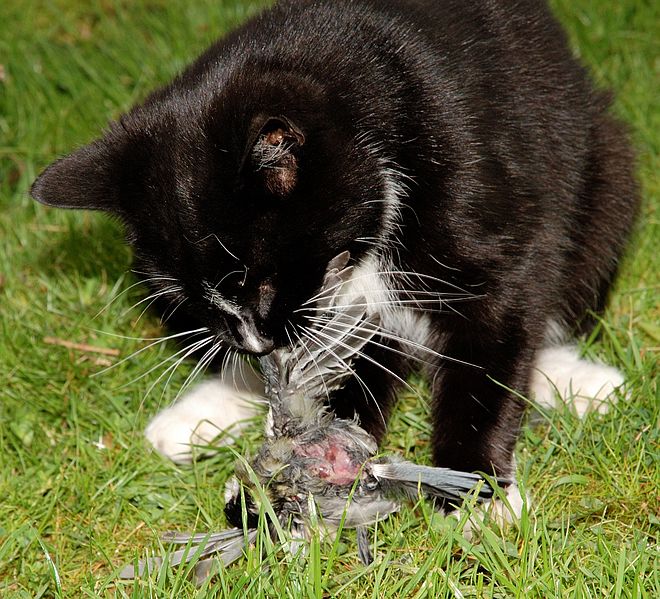Auckland Council is currently consulting on its Pest Management Plan. Under this plan there is a way wandering cats could be managed within sensitive wildlife areas, but the council will act only if people stand up and ask for it.
Most of the species that harm our native species are managed in some way. Possums, stoats and rats are routinely trapped or poisoned by landowners, the council and volunteer groups. Dogs are managed, and if they are found wandering without identification are rehomed or humanely euthanised.
Cats are the only species above the law. They are not managed in populated areas because we have no way of telling if any given cat is owned, and by whom. Yet we know for certain that cats are the most numerous predator in our urban areas. The Morgan Foundation recently placed motion-triggered cameras on properties all over Auckland city, and found that cats outnumbered all other predators combined by 26 to one.
Each property received an average of at least two cat visits a day; across Auckland this amounts to 300 million cat trespasses a year.
The results were consistent with an earlier study we did in Wellington last year.
The busiest areas for cat visits were in West Auckland, South Auckland and on the city fringe (Mt Eden). But the most surprising result was that cats were even snapped wandering on the most remote properties fringing the Waitakere Ranges – where endangered kokako are making a comeback.
All the money spent and work being done by the council and volunteer groups to restore native wildlife, trap other predators and manage dogs is a complete waste of time if we don’t manage the number one problem – cats.
Auckland Council has the power to manage cats if it chose to do so. Currently feral cats are defined as a pest in Auckland’s pest management plan.
To manage cats in urban areas, the council needs to be able to determine if a cat is owned, either with a microchip or collar. Under the pest management plan, Auckland Council could define a feral cat as a cat without a microchip or other identifier (such as a collar or harness). This definition would apply in specified sensitive wildlife areas.
With this in place, any cats found wandering in sensitive wildlife areas could be checked for identification. If they have identification they could be returned to their owners, and if not, they could be rehomed or humanely euthanised.
Examples of sensitive wildlife areas might be the Waitakere and Hunua Ranges where endangered kokako are breeding, and even places like the Te Atatu Peninsula, where the threatened fernbird lives.
Microchipping cats would bring a number of additional benefits. Cats that are causing fights, spreading disease or damaging property can be identified, and their owners held to account. While pet cats no doubt bring joy to their owners, they should not get all the fun while their neighbours have to put up with the downsides.
Microchips also help keep cats safe, which is why the SPCA recommends it. Not only do microchips ensure that a cat isn’t mistaken for a feral, but microchips generally reduce your cat’s chances of getting lost. After the Christchurch earthquake, more than 80 per cent of the lost cats with microchips were returned to their home, whereas only 15 per cent of the cats without microchips did the same. Having a system of microchipping should also prevent a repeat of the pet cat that was killed when found behind the predator-proof fence in Shakespear Regional Park.
Microchipping cats is standard in Australia and long overdue here. In its Pest Management Plan, Auckland Council has the opportunity to lead the way and at least pilot this approach in certain sensitive areas.
You can make a submission on Auckland’s pest management plan by filling out the form below.
[gravityform id=”4″ title=”false” description=”true”]
